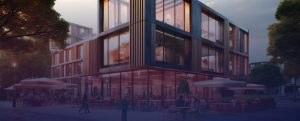CLICK HERE TO READ THE REPORT
Market Overview
With a little more than half of the East Austin population renting, the apartment market continues to reap the repercussions from the coronavirus, primarily because of heightened vacancies throughout 2020. Since the start of March, rents have contracted by six percent, less than neighboring Downtown’s rent decline, and well behind the overall Austin average. East Austin is one of the fastest gentrifying submarkets in Austin, as reflected in the unpredictable vacancy levels over the last ten years, primarily due to the supply. Rents vary widely across the area, but the up-and-coming activity has caused rental growth to outperform the entire Austin metro. The current pipeline holds 1,400 units, further widening the gap between supply and demand and will ultimately affect vacancies. While landlords usually command higher rents in new units, the current economic environment poses a threat, with lease-up traffic slowing due to the pandemic. Affordability concerns spark as many units rent at the top of the market, especially among 4 & 5 Star units, where households would need to make more than $70,000 a year to allot 30 percent of their income towards rent. These highly rated apartments rent for more than 30 percent than the metro’s average. Developers may wait until current projects absorb until starting on the next wave of projects. Some units are currently master-leased to short-term rental companies, and with travel lower than usual, these units are subject to coming back to the market if conditions do not return to normal. Looking back at how well new deliveries leased before the pandemic, experts predict that Austin, including the East Austin submarket, will see a robust return if small businesses can pull through current conditions.
What Does This Mean for Investors?
The multifamily sector has been one of the favored asset classes in 2020, as the pandemic disrupts other industries. Given the stable rent roll and permanence of current tenants, multifamily is predicted to come out stronger once COVID-19 concerns subside. However, the industry has not escaped without a scrape. The COVID-19 pandemic has slowed transaction activity, as buyers and sellers report a wide bid-ask spread. Further, a lack of pricing information due to non-disclosure laws in Texas complicates matters. The amount of construction occurring in East Austin demonstrates the amount of interest and potential the submarket poses. The submarket has historically been liquid, but with institutional investors arriving in the area, long-term holders are making waves. In the past 12 months, eight sales have taken place in East Austin.









